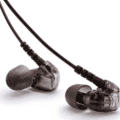In computer networking, a domain typically refers to a domain name. This would be the human-readable identifier for an Internet Protocol (IP) resource. All devices on the internet are addressed via IP addresses. While these are great for computers to use, they’re not particularly memorable for people.
Imagine if you had to remember the IPv4 address “31.13.84.36” or worse the IPv6 address “2a03:2880:f107:83:face:b00c:0:25de” if you wanted to browse to Facebook. While you might be able to remember a few addresses, in the same way that you remember phone numbers, it’s not ideal.
Note: Facebook has a vanity IPv6 address with the string “face:b00c” in it.
To make it easier to browse the internet, the Domain Name System or DNS was created. DNS offers human-readable domain names that DNS servers can translate into IP addresses. This means that you can type an easy to remember domain name like www.technipages.com while your computer works out the actual IP address to send the request to automatically in the background.
Contents
The Structure of a Domain Name – Start at the End
Domain names have a standard structure. Let’s take www.technipages.com for example. This domain name has three parts. From right to left, you have the TLD, then the domain name, and finally the subdomain.
TLD stands for top-level domain. There are technically two variants, denoted by ccTLD and gTLD. The “cc” stands for country code while “g” stands for generic. Country code TLDs are designed for use for country-specific sites, though not every ccTLD actually belongs to a country such as .eu for the European Union. For example, the ccTLD .ua is the code for Ukraine.
Some countries have chosen to restrict the use of their ccTLDs to people or companies from the country. In contrast, others allow anyone to register domains using their ccTLD. For example, Columbia (.co) allows anyone to use their ccTLD. At the same time, the European Union ccTLD .eu is restricted to companies or individuals based in the EU. The island of Guernsey has the ccTLD .gg, which is often unofficially used by gaming sites because registration is unrestricted.
Generic TLDs are not related to any country. The most well-known example would be .com but there are many others including .edu .mil .gov .org and .net. Some of these also have restrictions on who can register a domain under the gTLD. For example .mil is exclusively for military sites and .gov is exclusively for government sites. Since 2012 IANA, the organisation responsible for managing the list of TLDs, and ultimately responsible for the distribution of domain names, has been adding many new gTLDs including .google and .bmw.
The Actual Domain in a Domain Name
The actual domain name for www.technipages.com is “technipages.” The “www” part on the front is known as a subdomain. To register a domain you need to pay a domain registrar a fee and inform them of the domain name you wish to use. Domain names must be unique within a top-level domain. The current owner, if there already is one, always has the preferential right to renew their domain name ownership. Domain names are case insensitive. This means that www.technipages.com and www.Technipages.com will resolve to the same IP address.
A subdomain is simply a prefix on the front of a domain name. These also have to be registered and advertised separately on a DNS server. Still, you don’t need to purchase the rights to a subdomain. Owning a domain, confers the rights to any subdomain. It’s possible to nest subdomains an arbitrary number of times, though some software may have limits.
For example, you could have bank.of.america.com. There isn’t any particularly agreed standard naming convention for nested subdomains, some will refer to them as sub-subdomains while others might refer to the first one as the subdomain and everything else as the domain, the best option may be third-, fourth-, and fifth-level domains etc.
Other Uses of the Term Domain
An enterprise-class Windows network is known as a domain. This domain is managed by a domain controller, which also acts as an internal DNS server. This domain has an identifier name, also known as the domain. The chosen name of the domain doesn’t need to be unique as it is purely an network internal name and is not public.
A broadcast domain is another name for a network. It is the area in which a broadcast packet will be heard, given that broadcast packets are not forwarded to other routers outside of bridged LAN segments. A collision domain is a similar concept but refers to what may be only part of a network where two devices’ transmissions could interfere, causing a collision.
Conclusion
The term domain in computing typically refers to a domain name, or the device/service the domain name represents. The domain www.technipages.com has three parts: TLD of .com a domain name of “technipages” and the subdomain www. The domain name is a human-readable name for a network device. Domain names are automatically translated to an IP address by DNS to enable actual communication with the intended server.




